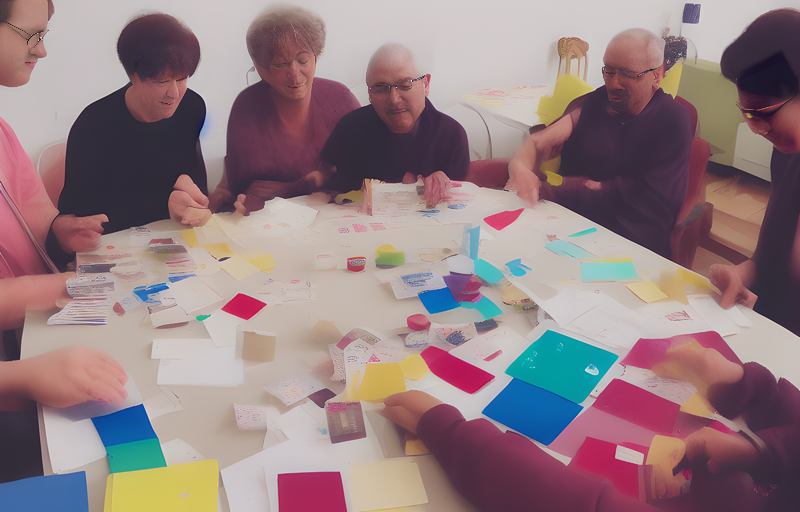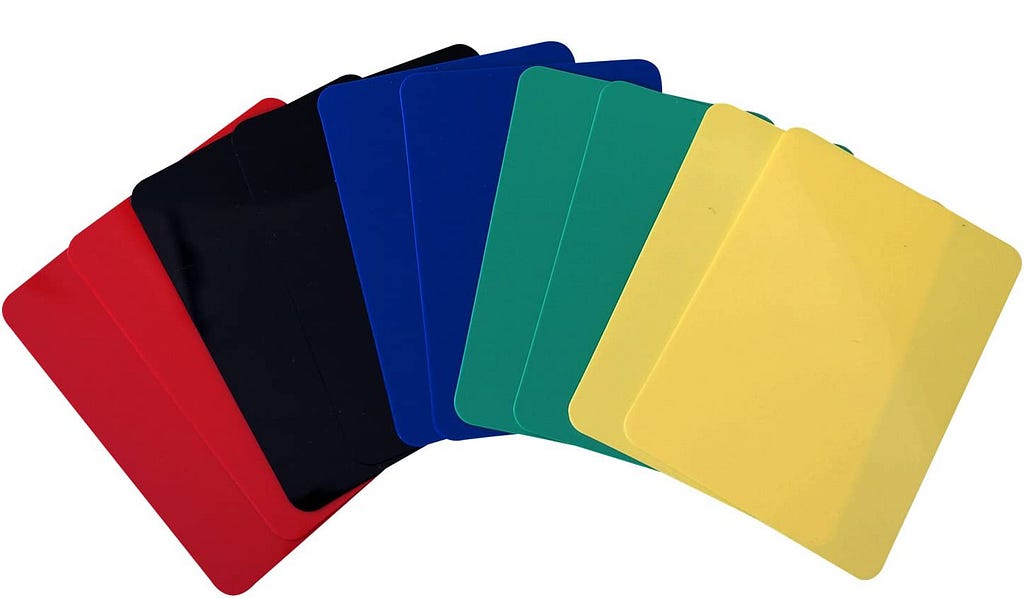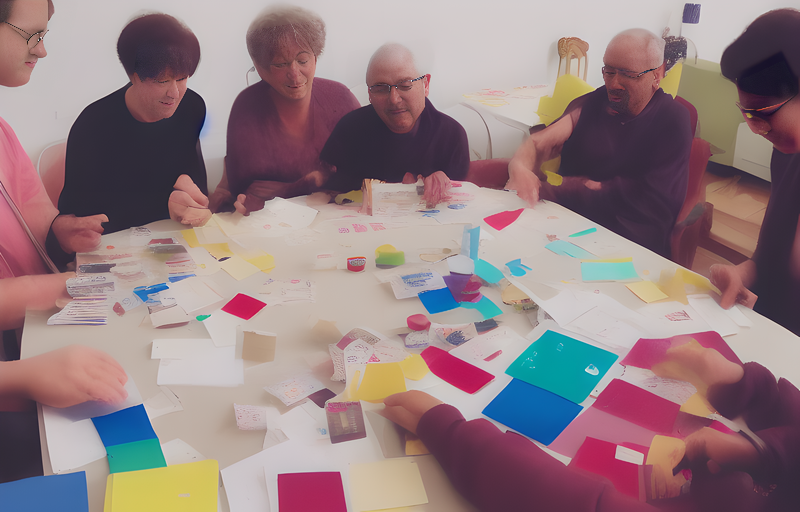A guide to conducting card sorting with participants who are visually impaired.

Card Sorting is a UX research method used to understand how users categorize and organize information, which reflects how they expect information and content to be organized on a user interface.
In this method, participants are given a set of cards containing words, phrases, or concepts and are asked to group them into categories that make sense to them.
There are two types of card sorting methods —
- Closed card sorting: participants are given pre-defined categories and asked to sort the cards into those categories.
- Open card sorting: participants are given cards without predefined categories and are asked to group them in a way that makes sense to them.
Card sorting is helpful for UX professionals because it enables them to comprehend users’ mental models and thought processes regarding information organization.
This information can be used to design information architectures, navigation systems, and website or app structures that are more intuitive and easier to use.
Additionally, insights from how users prioritize different types of information and show areas where the content and information provided may be inconsistent or lacking, it can help improve the overall user experience.
Problems with traditional Card Sorting for participants with visual impairments
There are several types of visual disabilities, including astigmatism, cataracts, glaucoma, retinitis pigmentosa, and color blindness. We are considering the worst-case scenario here, which means extremely low vision or complete blindness. Also, this article focuses only on in-person card sorting.
There are several problems with traditional card sorting when it comes to working with folks with visual impairments. Such as not having a dedicated facilitator, not partnering with an accessibility consultant, not having sighted participants, etc.
However, there are three major issues that impact the most and must be addressed before conducting a card sorting session with people who are visually challenged, such as —
- Not being able to read what’s written on the cards.
- Not being able to touch and feel the cards, move, and manage them properly.
- Not being able to organize the cards efficiently.
How to adapt traditional Card Sorting for people with visual impairment
Braille Label: Provide braille labels for each card so that participants who are blind can easily read and comprehend the content on each card. In-case of open card sorting, there will be a need to create new braille labels for new categories that the participant comes up with. The facilitator should create a new braille label for the new category using a braille labeler.

Use tactile cards: Instead of using standard cards, use tactile cards that have raised bumps or textures so that it’s easier for them to handle, meaning pick up and move around these cards. Tactile cards can be made of foam, rubber, or plastic materials.

Trays, containers, or organizers: Instead of only labels on the table, it is better to use trays, containers, or organizers. The participants should be provided with organizers or stray with dividers so that blind participants can physically separate the cards into categories. The dividers or the labels should be made using a braille labeler to make it easier for participants to identify the different categories.
Miscellaneous things that can improve the process
There are also other minor things that can make card sorting effective and efficient. For instance, having a few sighted participants can help the participants with visual limitations. However, sighted participants should be at most 1 or 2 because it might pollute the data/insight gained from the session.
In many studies [1, 2], this evaluation was done among sighted participants or sighted people who tried to mimic blindness or visual impairment. Robles (2019) showed that these results were often valueless since they did not consider the people who were actually impaired.
This was because there was a significant difference in memory, attention, perception, and problem-solving between sighted people and people with visual impairment. Also, they demonstrated [3] that using braille cards gives positive results. The menu generated was similar to the original TalkBack menu.
CAUTION: It might not be the best approach for designing the information architecture
The above-discussed steps will drastically improve the card-sorting experience for a participant with a visual impairment. However, the objective should be slightly different when it comes to card sorting with people with visual impairments and designing for them.
When designing for users with visual impairments who primarily use screen readers, the information architecture may not be the primary focus of a card sorting exercise. However, card sorting can still be useful for gaining insights into how users with visual disabilities mentally organize and prioritize information.
Card sorting can be a useful method for designing the information architecture of a website or digital product. However, for users who have visual disabilities, and primarily use screen readers, the focus should be on the presentation and organization of content. Screen readers often present content linearly, regardless of its categorization or hierarchy.
Lastly, accessible electronic tools for card sorting, which follow Web Content Accessibility Guidelines (WCAG) and have some important accessibility features, can be more time and cost-efficient and effective. If the tool offers accessibility features like audio descriptions of the cards, auditory feedback, and keyboard shortcuts, it can be an excellent tool for doing card sorting remotely.
In conclusion, conducting a card sorting session with folks with visual impairment can be challenging but possible. By addressing the major issues visually impaired participants face in card sorting, such as reading the cards, handling the cards, and organizing the cards, we can make the experience more efficient and effective.
Using braille labels, tactile cards, and organizers with dividers can significantly improve the experience for participants with visual impairments. Moreover, involving a few sighted participants can provide additional assistance without compromising the quality of the data.
It is important to note that designing for visually impaired users who primarily use screen readers may require a different approach, and accessible electronic tools can offer a time and cost-efficient solution.
By making card sorting more inclusive, we can gain valuable insights into how users with visual impairments mentally organize and prioritize information, ultimately designing more accessible products and services that meet their needs.
Thanks for taking the time to read my article!
Got anything to add? Please share your comments below.
If you found this article helpful or thought-provoking and want to stay in touch and see more of my work, feel free to connect with me on LinkedIn. You can also visit my website to learn more about what I do. And if you have any questions or just want to chat, don’t hesitate to shoot me an email at mishu.sarowar@gmail.com. I’d love to hear from you!
References and resources:
- Lewis Krystal and Hepburn, Peter. Open card sorting and factor analy- sis: a usability case study, The electronic library, Volume 28, 3, 401–416, 2010.
- Chaparro Barbara S, Hinkle Veronica and Riley Shannon. The usability of computerized card sorting: A comparision of three applications by researchers and end users, Journal of Usability Studies, Volume 4, 1, 31–48, 2008.
- Robles, T.D., Rodríguez, F.J., Benítez-Guerrero, E., & Rusu, C. (2019). Adapting card sorting for blind people: Evaluation of the interaction design in TalkBack. Comput. Stand. Interfaces, 66.
- https://www.nngroup.com/articles/card-sorting-definition/
- https://www.smashingmagazine.com/2014/10/improving-information-architecture-card-sortingbeginners-guide/
- https://www.usability.gov/how-to-and-tools/methods/card-sorting.html#:~:text=Card%20sorting%20is%20a%20method,help%20you%20label%20these%20groups.
Card sorting with visually impaired participants: how to overcome accessibility barriers was originally published in UX Collective on Medium, where people are continuing the conversation by highlighting and responding to this story.

Leave a Reply